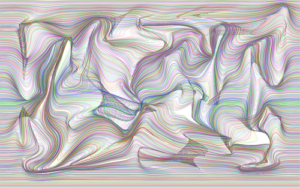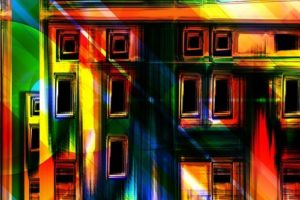Art is a beauty to behold. But a closer look will let you realize that several components make up the art that you are appreciating. These different elements reveal the quality that the art possess, such as movement, depth, structure, contrast and various emotions that the artwork evokes.
It is important to understand the visual elements of art so that we can give an in-depth appreciation of the great work exerted to create an artwork. The building blocks of art are made up of lines, shapes, tones, colors, patterns, textures and form. We explain these elements in details below.
Line
A line is the starting point of any drawing. Lines are used to show the form, pattern, shape, distance, and movement in art.
The line could also show various expressive qualities. Freehand lines express the energy of the artist. Mechanical lines show control. Continuous lines lead the eye to a particular direction. Thick lines convey strength while thin lines depict softness.
Shape
Shapes can affect feelings and create an impression to the viewer. For instance, round shapes could represent continuous movements. Triangles often make you look upward while inverted triangles could give you a feeling of imbalance.
Tone
The tone is defined as the lightness or darkness of a color. It can be used to create an illusion of form. The tone also gives a sense of distance and depth. It is also useful to create patterns within the composition.
Color
The first thing that we notice in an artwork are the colors. The colors set the mood of the artwork being observed. Color are used to highlight the tone, pattern, form, movement, contrast and light.
Pattern
The pattern is created by repeating the elements in the artwork to provide a sense of balance, contrast or movement. There are two basic patterns used in the art.
- Natural pattern – These type of pattern is inspired by nature. We are often inspired by the patterns in animals and symmetry in nature.
- Man-made pattern – The type of pattern is created by the artist by using lines and shapes.
Both basic patterns can be regular or irregular, structural or decorative, and random or repeating.
Texture
The Texture is the surface quality of the artwork. This is the roughness or smoothness of the material used in making the artwork.
The texture is experienced optically and physically. In visual texture, the artist uses a painting technique to create an illusion of texture. On the other hand, the physical texture is reflected with the brushstrokes or the natural texture of the materials they are using, such as wood, paper, and textile.
Form
The form is the physical volume of a shape and space that it occupies in the artwork. This quality is observable in sculpture and architecture. There are two types of form, and they are three-dimensional and two-dimensional.
- Two-dimensional form (2D) – Perspective drawings and holograms are examples of the 2D form.
- Three-dimensional form (3D) – Sculptures is an example of 3D.
Try to remember these elements when you look at an artwork next time. You will discover that art is more than just a picture or sculpture. You will also get to know the artist’s expression if you look more closely.


